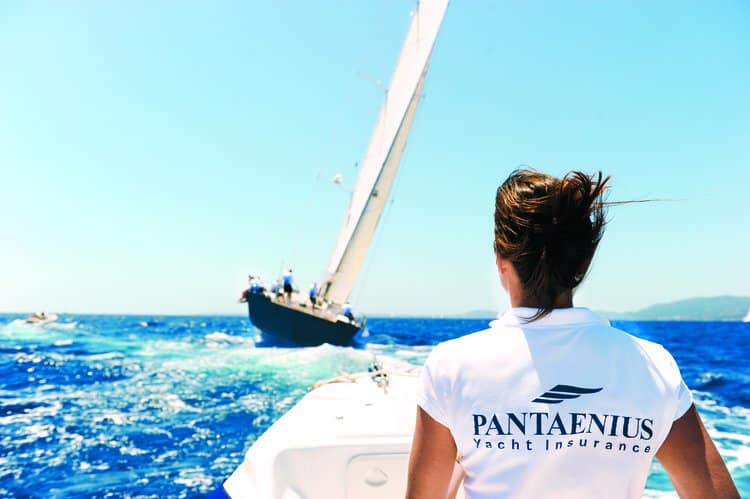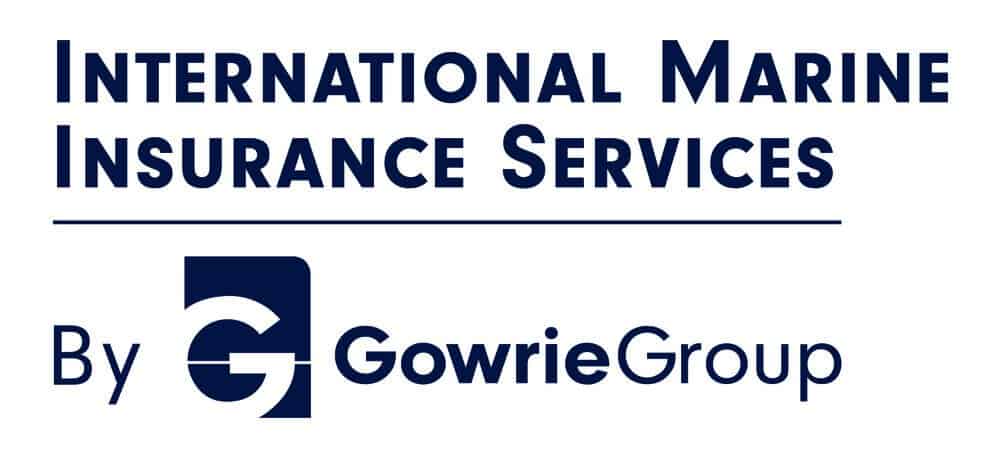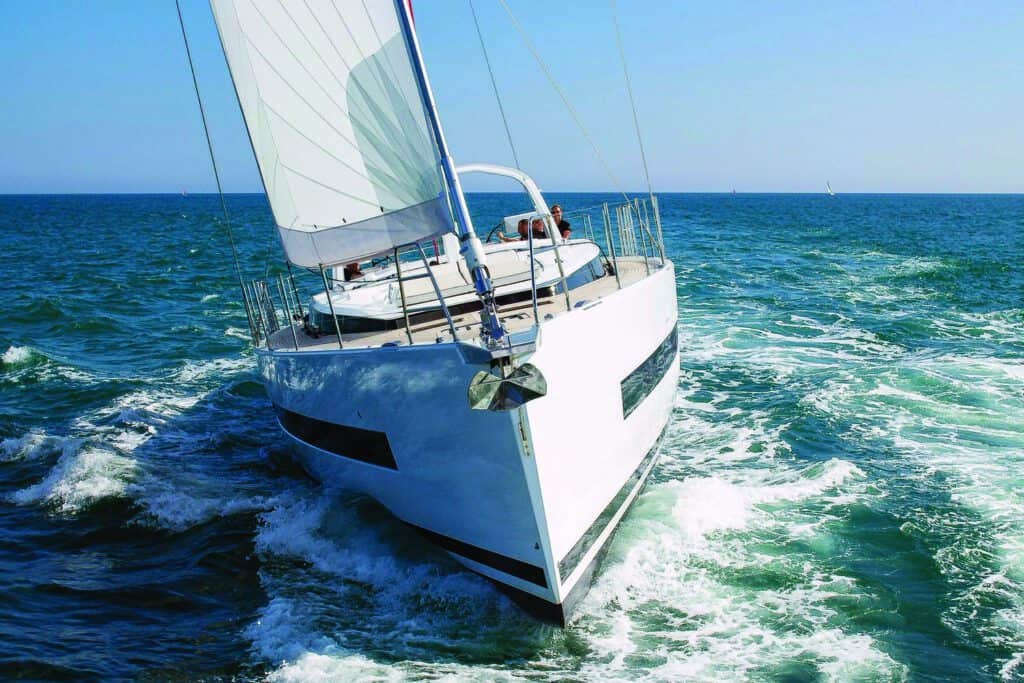
Financing the Dream
For most of us, buying a boat will require bank support. The first step should be a credit check. Lenders are looking for customers with credit scores of 680 and up.
There’s significant shared value to the bank and the buyer in new boats. New boats come with warranties. If the buyer has a change of heart down-stream, even if it’s only to buy something different, he will have a better chance of selling a newer boat under warranty and thereby pay off the loan. It’s a better risk for the bank.
On the other hand, used boats often represent bargain purchases, so there is less to pay for what could be a well-appointed boat owned and cared for by a thoughtful first owner.

America Ltd.
914-381-2066
www.pantaenius.us
Pantaenius America Ltd. is part of the Pantaenius Group, which is operated worldwide and boasts 50 years of experience providing insurance solutions for yacht owners. We insure boats and yachts 27’ and greater, are licensed in all 50 states and have five offices in the U.S. At Pantaenius, you speak to insurance experts who understand your needs, as many of our team members are avid motor boaters and sailors. Visit our website to view the highlights of our policy and discover why 100,000 yacht owners worldwide choose Pantaenius
A home equity line of credit could be a path to the cash and terms you need to get the boat. In that case, the loan is secured by your home, a better risk consideration for the bank.
Most small boat dealers offer dealer-financing, which is a loan-brokerage arrangement with various lenders that simplifies and assists buyers on-the-spot. The dealer may have access to lenders offering better terms than the brick-and-mortar banks since they have developed relationships with specialized lenders who better understand the boat-loan business. Your local bank may not have a boat loan specialist to focus on the marine market.
Karen Trostle is the owner/president of Annapolis-based Sterling Acceptance Corporation specializing in boat, RV and home loans with offices in Maryland, Virginia, Rhode Island and California.
Trostle—“Current marine financing rates are in the high three and low four percent range for loans over $100,000. It’s a good time to buy. Pre-approval is always a smart option, especially for buyers who are unsure of how much they can borrow. Credit scores over 680 are most desirable. Marine finance service professionals most often offer the widest array of sources to accommodate unique credit granting criteria such as charter, liveaboard or LLC ownership. They will save you time and headache over shopping around one-lender sources.
The Federal Reserve has indicated a rise in rates up to three times in 2018, so there’s no time like the present to buy your dream vessel. Rates are incredibly low and the lenders are ready to serve the buyer.”

Jane M. Tayman
443-336-8499
888-386-3121
tridentfunding.com
Trident Funding has the most experienced management, sales and credit team in the marine lending industry. Our experience in handling credit packages no matter how large or small combined with our understanding of the boat lending industry, allows us to help match you with the best boat loan program and lending partner for you. Trident Funding has been in operation for over 20 years – Work with the team you can trust!
Jane Tayman is the Mid-Atlantic sales manager at Trident Funding (410-280-9199) specializing in Marine, RV & Aircraft Financing. Jane is based in the Annapolis, MD office and oversees locations in MD, DC, DE, VA, NJ & North Carolina areas.
Tayman— “Fixed-rate loans remain attractive going into 2018. The rates and terms are determined by credit score, age-of-vessel, loan amount and down payment. Prospective buyers should plan to get pre-approved before investing time and money (down payment, survey) in the shopping and buying process.
The turnaround time for an approval is typically 24 to 48 hours, the lock-in rate period is 30 to 45 days from the date of approval, giving a customer ample time to shop knowing what his/her price range is.
Loan approval is based on a minimum credit score of 680, the debt-to-income ratio, payment-to-income, and the age of a vessel.
Trident is able to grant longer terms and lower rates than conventional banks as they are partnered with more than 10 lending sources which enables a customer to have a multitude of options for financing.”
Insuring Her

DON PARKHURST,
Senior Vice President
800-797-BOAT (2628)
suntrust.com/marine
SunTrust marine lending experts have the experience that few other banks have. In addition to providing you with your boat loan, we can help you value your boat, find a surveyor and we can even document your boat with the U.S. Coast Guard.
There are two types of boat insurance—agreed value and actual-cash value. Agreed value is based on the boat’s value on the day that the policy is written. This means that depreciation is not factored in when determining if a boat is a total loss. However, a partial loss may be depreciated when adjusting for repair. Actual cash value policies factor in depreciation and normally cost less.
Another key term to understand is “all-risk.” This is the normal type of policy, but it doesn’t mean what it might appear. It means that the policy covers any damage not specifically omitted in the policy. So, be sure to read and assess the exclusions, which will normally account for such conditions as wear and tear, manufacturing defects, design defects, freezing damage and so on.
Never fear, your insurance company will be happy to add extra coverage to include personal effects, liability, towing costs, salvage costs, specialized gear coverage (navigation equipment, propeller…), and consequential damage such as mold, corrosion, rot and other elements to make you rest easy. Many policies cover attached equipment such as anchors, auxiliary engines, tools, installed cushions and some essential gear. You may also need temporary cruising extension coverage if you’re planning to take off to another jurisdiction like Cuba, the Caribbean, Canada and beyond. But you need to confirm it, see it in writing and, of course, pay for it.

Suzanne Redden
800.541.4647
gowrie.com/imis
Together, Gowrie Group & IMIS are the largest independent marine insurance agency in the nation. Offerings include risk management services and insurance solutions for boats & yachts, worldwide cruisers (Jackline Program), wooden boats, sailing organizations (Burgee Program), marine businesses, and crew medical. Comprehensive insurance solutions are delivered with trusted advice and a commitment to service excellence. The company’s new Mid-Atlantic office is located at 522 Chesapeake Avenue in Annapolis.
Most good yacht policies cover towing, salvage, liability, and all equipment “pertinent to the operation of the vessel,” but you may want to be sure on high-valued tenders and such.
Owners of small boats, normally under 26 feet long, can usually add the boat to their homeowner’s insurance policies, but there are usually limits on where and how the boat can be used. Most homeowner’s policies restrict the coverage to use in inland waters, lakes and rivers. The policy may also restrict the amount of horsepower. But it’s worth considering, as the cost and convenience can make this option attractive. For coverage of a particularly high-value boat of this size, it’s smart to consider a good agreed-value policy from a specialist.
Besides the boat value and your intended use of the boat, the cost of insurance will take into account your boating safety education, your boating and driving records, liability limits, credit score and the deductible.
If you live or travel through the hurricane zone, your insurer will want you to provide your hurricane plan. Do you have a safe place for the boat during a storm? Can you store her inside a stormproof facility? The answers will affect the price or even whether you can get coverage at all.
Discounts may be available for limited use. If you store your boat out of the water in the winter, you may qualify for a break in price. Freshwater use is less expensive than saltwater.

www.geico.com
GEICO and the boating experts at BoatU.S. have teamed up to give boat insurance customers a great insurance policy. GEICO is the second-largest auto insurer in the country and offers excellent insurance services. BoatU.S. (Boat Owners Association of The United States) is the nation’s premier boating organization.Together, we offer outstanding coverage for your boat (at an outstanding price) with service provided by the experts at BoatUS. Customize your policy with fishing and watersports equipment coverage and an Unlimited Towing endorsement from TowBoatUS – the nation’s largest fleet. Get a fast, free quote today.
Marine insurance is largely unregulated and no two policies are alike. It pays to shop around.
Finally, insurance is about adding to the comfort of boat ownership. The purpose of having a boat is to enjoy it safely and know that you are covered in the event of the unexpected.
Totch Hartge of the Gowrie Group has been in the marine insurance business for more than 40 years. He has an office in Galesville, 800-999-5251. The Gowrie Mid-Atlantic base is in Grasonville headed up by Suzanne Redden, 800-541-4647.
Hartge—“On the heels of the extraordinary 2017 storm season, some insurance companies have dropped out of the marine market, which means there are fewer options for marine insurance agents and buyers—All the more reason to consult a marine insurance specialist who is on top of the market.
This is not a big impact on existing boat owners in the Chesapeake, Northeast and Mid-Atlantic. The main impact will be for boats at home or traveling down south and in the Caribbean.”
Cary Wiener is the president of Pantaenius America, based in Harrison, NY with an Annapolis office headed up by Scott Stusek (443-569-7995.)
Wiener— “Unlike conventional home insurance, there are no standard clauses for yacht policies. Every insurer presents its own conditions and exclusions. The wording varies, and it’s important to understand the effect of the differences. Be sure to read and understand what you’re buying. When a policy appears less expensive, understand that it may not cover as much.”
It’s important to come in knowing your needs based on how and where you will use the boat and also your tolerance for risk. Come with questions—such as, ‘When will the policy begin figuring in depreciation?’
We expect substantial increases in premiums for boats in or traveling through Florida and the Caribbean due to the 2017 storm devastation. However, we don’t expect dramatic increases outside of these areas as companies compete to replace the loss of business down south.”

